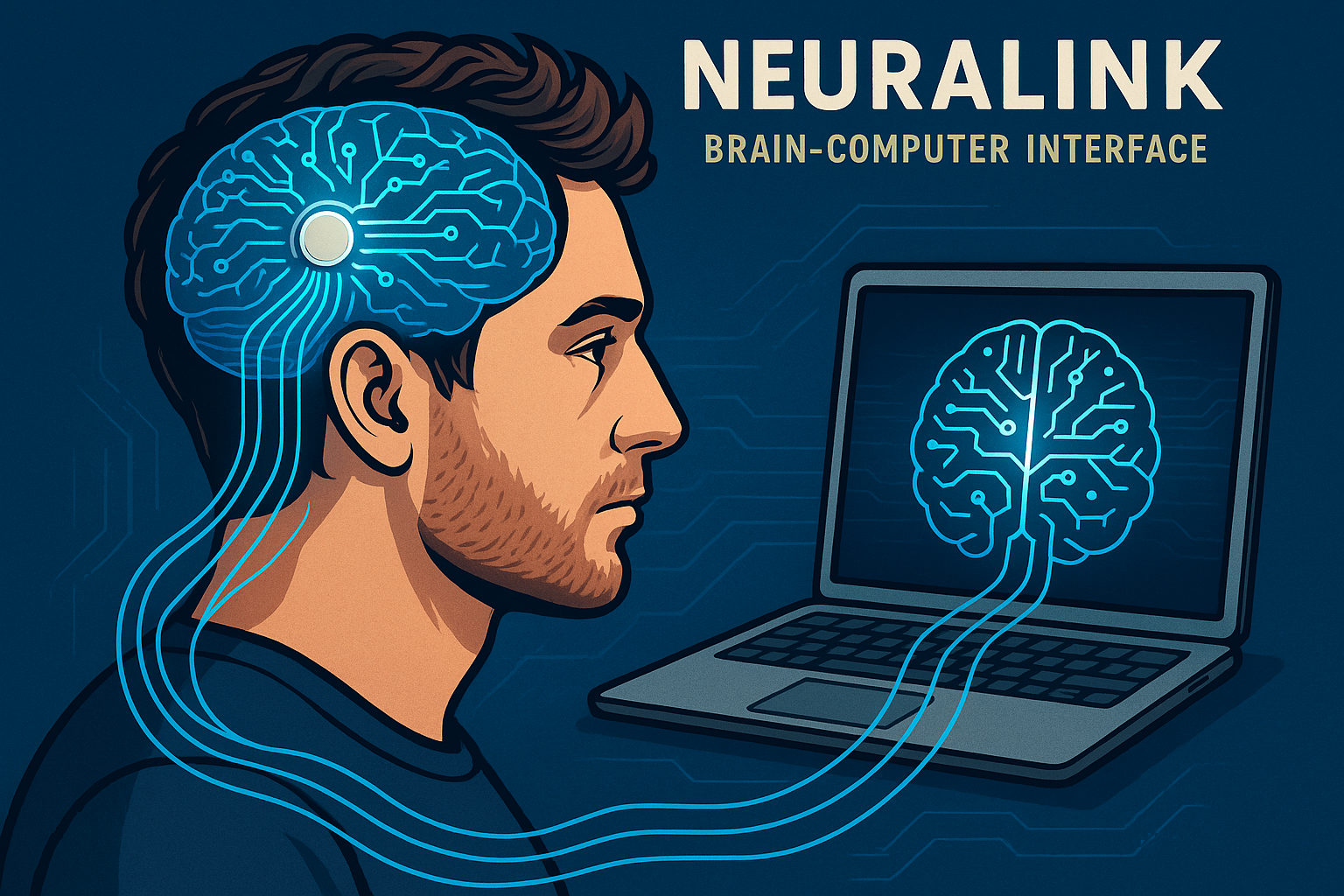Imagine being able to move a computer mouse, type a message, or control a robotic arm just by thinking. That’s the promise behind Neuralink, the revolutionary brain-chip technology developed by Elon Musk’s company. But how does it actually work? Let’s break it down step by step, in the simplest way possible.
🧠 1. The Brain Sends Signals
Your brain is made up of billions of neurons. These neurons communicate with each other using electrical signals. Every time you move, feel, think, or speak, your brain is sending these tiny signals.
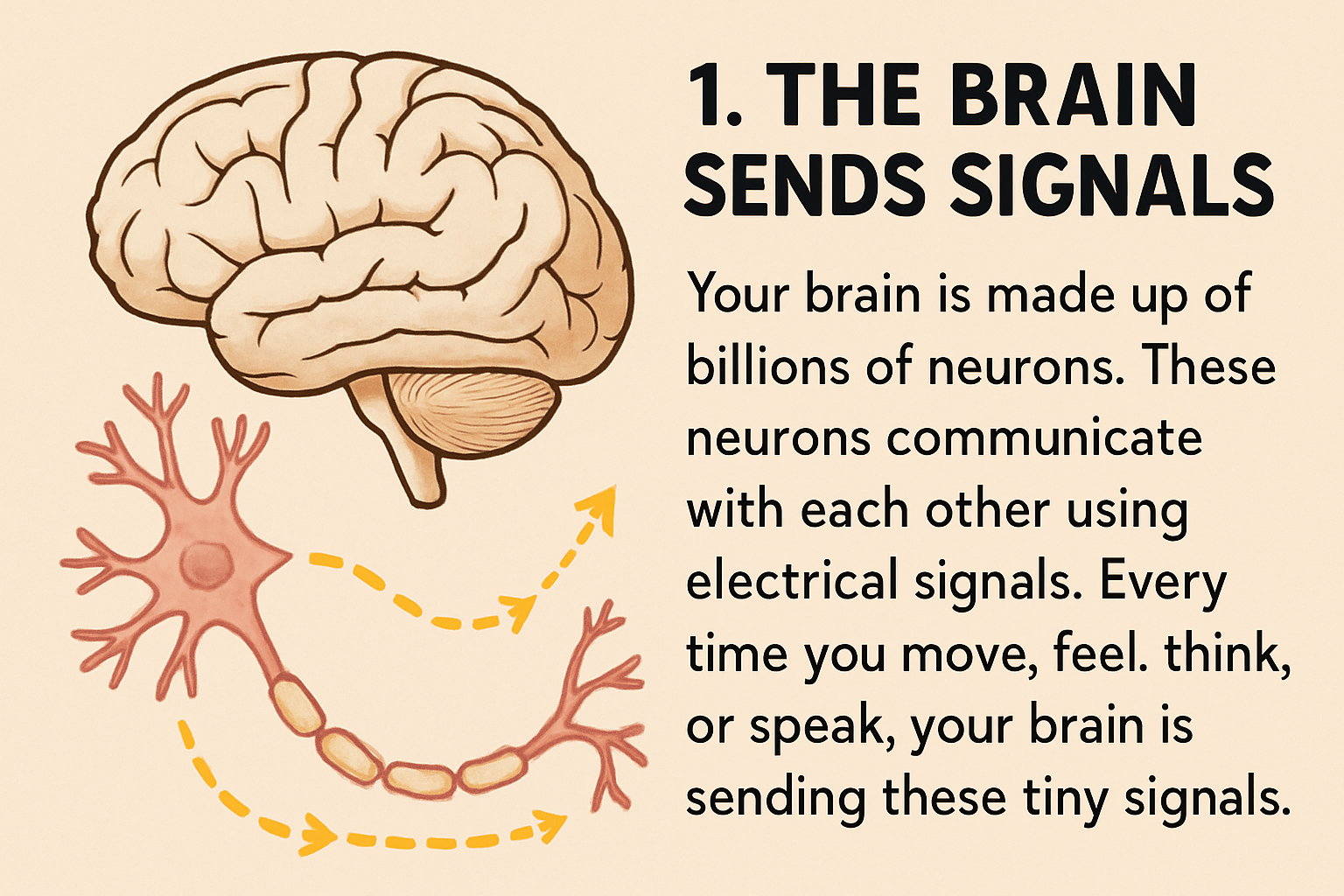
🔌 2. Neuralink Captures These Signals
Neuralink’s device — a small, coin-sized implant called “The Link” — is surgically placed in your skull. From this device, tiny flexible electrodes (called threads) are inserted into specific areas of your brain. These threads are much thinner than a human hair and are designed to pick up electrical signals from neurons without damaging brain tissue.
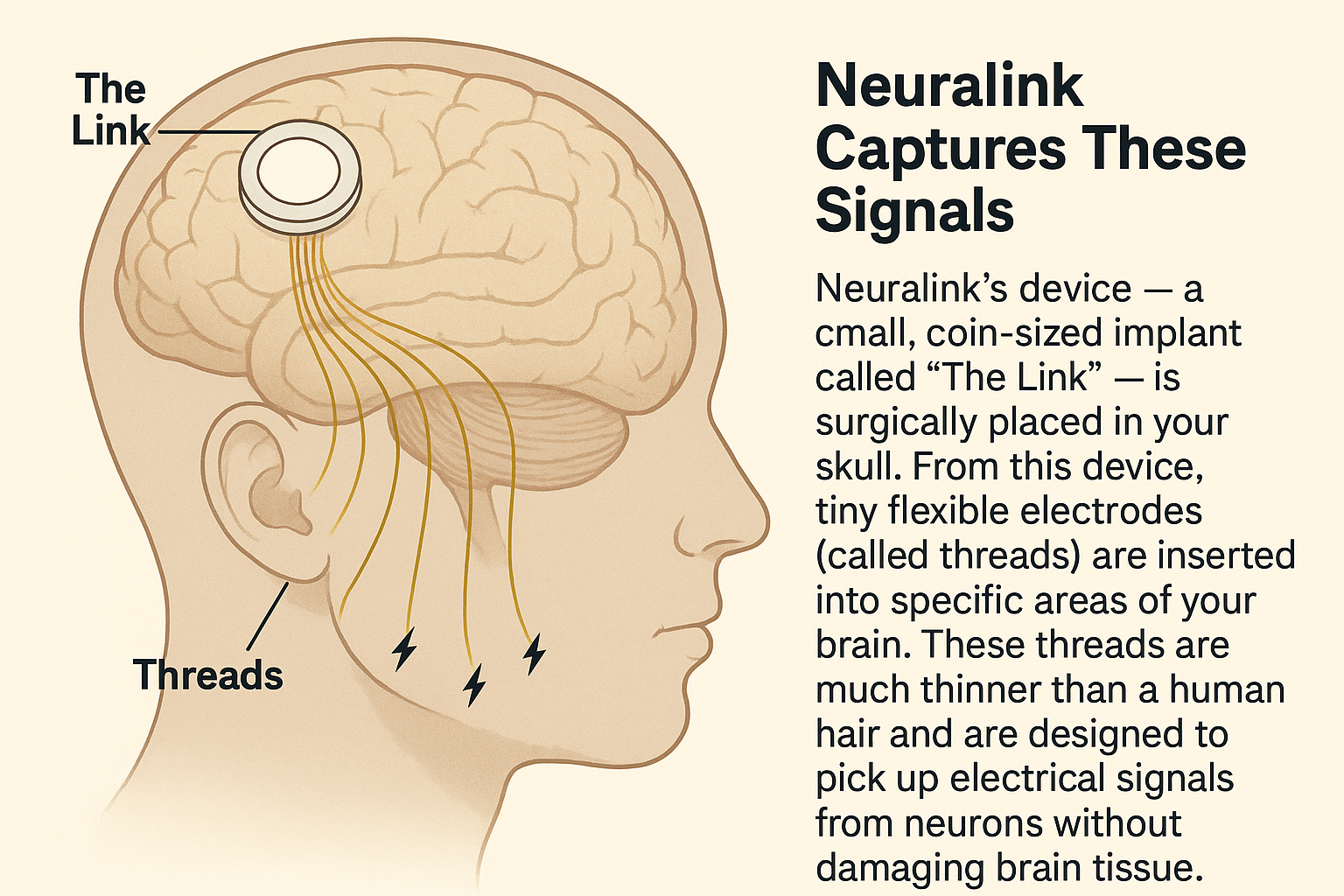
🖥️ 3. The Chip Reads and Translates Brain Activity
The chip inside the Neuralink captures raw electrical signals from your brain and translates them into digital commands. For example, if you think about moving your hand, the chip recognizes the pattern of brain activity associated with that thought and converts it into a computer-readable signal.

📲 4. Wireless Communication with Devices
Once brain signals are converted into digital data, they are sent wirelessly (via Bluetooth) to a nearby device, such as a smartphone or computer. This allows users to control external devices with their thoughts, such as typing on a screen, moving a cursor, or interacting with apps.
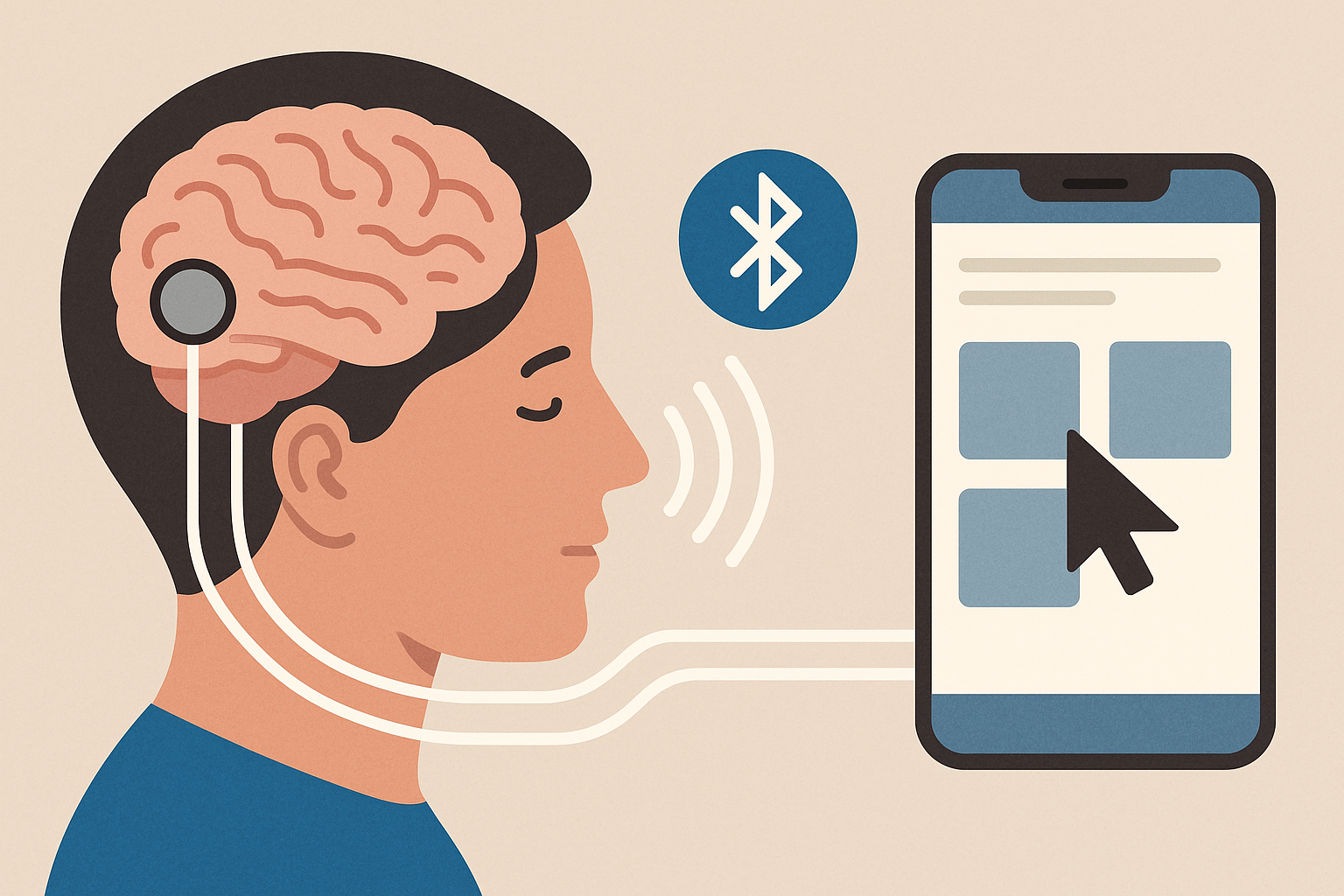
🧪 5. Real-life Example: Moving a Cursor with Your Mind
In early 2024, Neuralink successfully implanted this chip in a human for the first time. The person was able to move a mouse cursor on a screen using only their thoughts, without any physical movement. This real-world test shows that the technology isn’t just theoretical — it actually works.
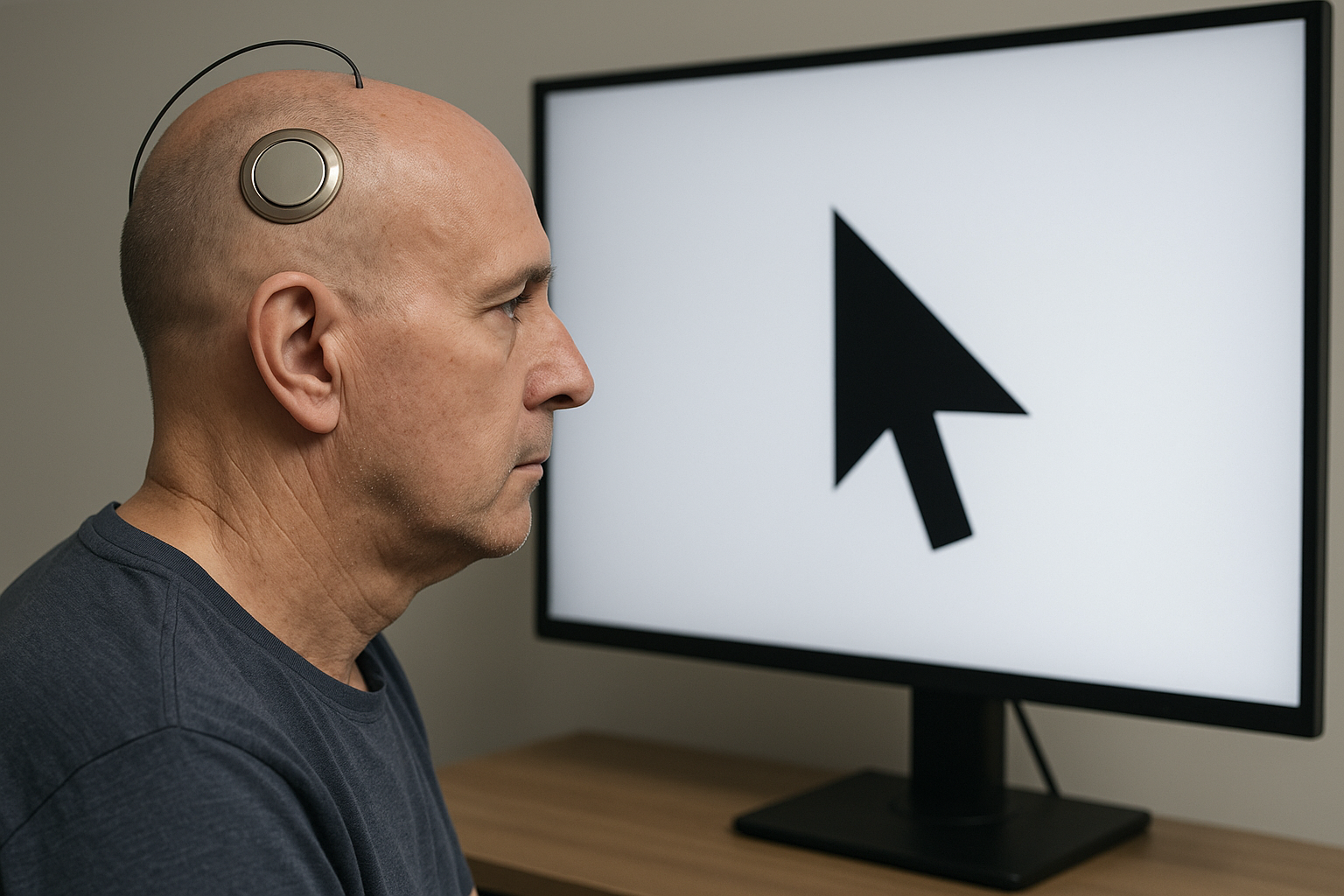
🚀 6. What Could This Mean for the Future?
Neuralink is still in its early stages, but its long-term goals are phenomenal:
- Helping paralyzed people control computers and phones.
- Restoring lost abilities like vision or hearing by bypassing damaged nerves.
- Treating brain disorders like depression or epilepsy.
- Ultimately, enhancing human cognition and creating direct communication between the brain and artificial intelligence (AI).
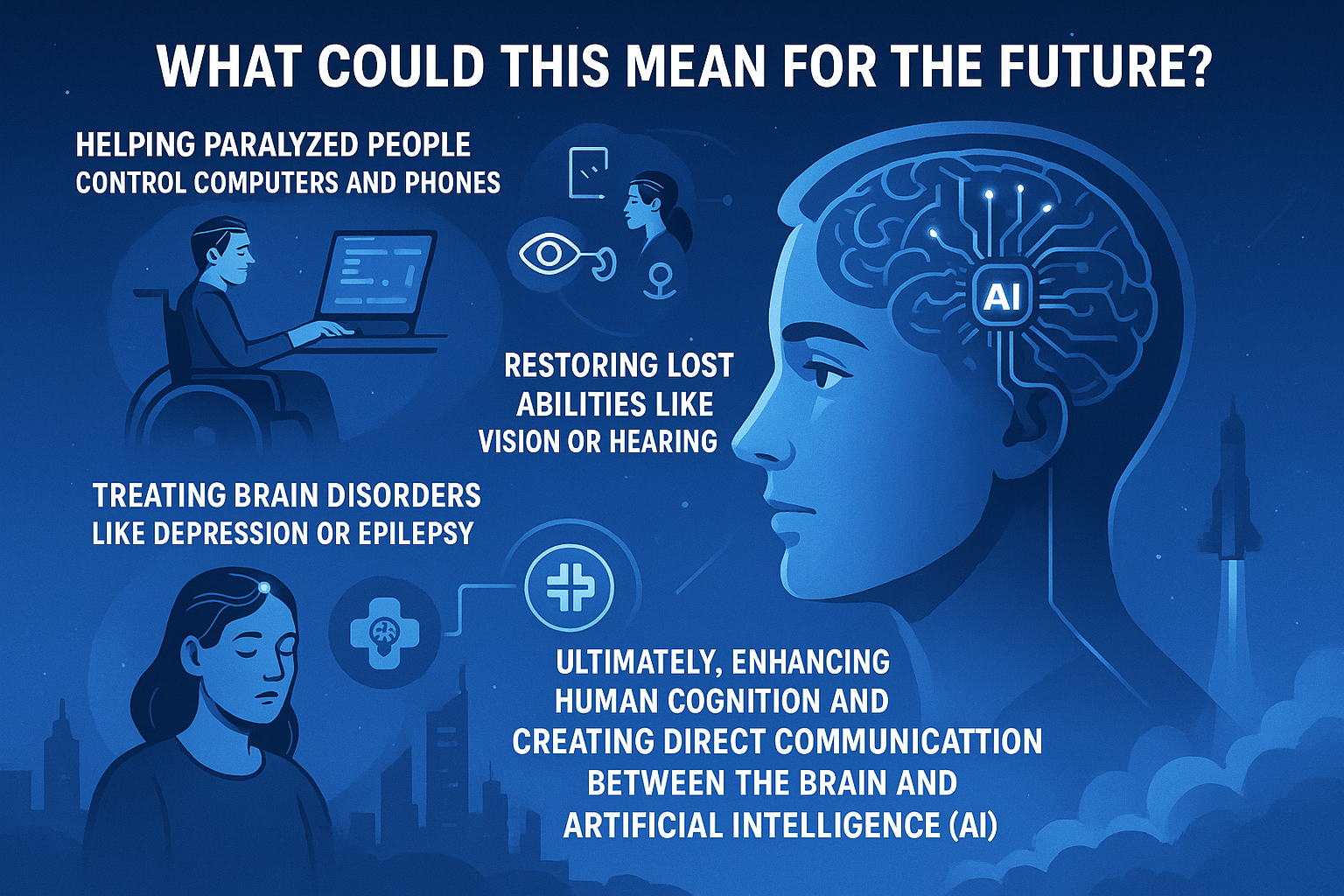
⚖️ 7. Final Thoughts
Neuralink works by creating a seamless bridge between your brain and a computer — no hands, no voice, just thoughts. While the science may seem futuristic, the technology is real and advancing rapidly. Although challenges remain (such as safety, ethics, and long-term effects), Neuralink represents one of the most exciting frontiers in neuroscience and human-computer interaction.
